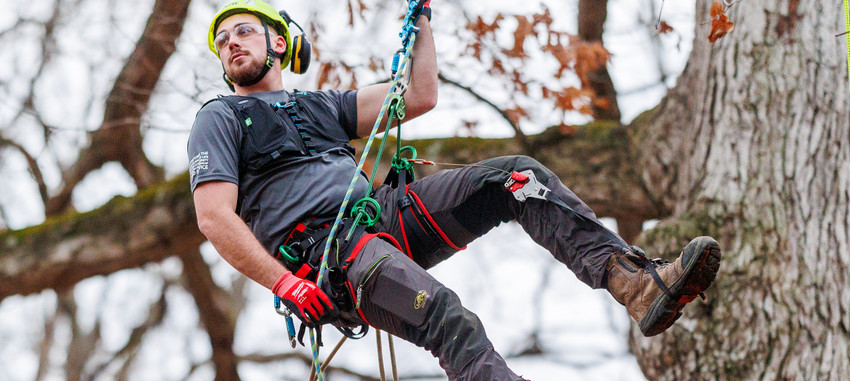TFTC #42 Make your climbs more efficient with these planning tips
Sherrilltree Mar 27th 2025“Get in the tree and we’ll figure it out” is no way to work if you want to save time and reduce wear and tear on your body, your equipment, and your crew. Yes, planning for maximum efficiency takes more up-front effort, but it can (and will) save you time in the long run and help your crew stay fresher longer.
Every job is different, from the size and shape of the tree to the recent weather and site conditions, so there’s rarely a one-size-fits-all approach for maximum efficiency. Instead, efficiency comes from analysis, intentionality, and practice. In other words, your climbs will get more efficient over time if you continue to plan for maximum efficiency, especially if you follow these five expert tips.
1. Stand back for the big-picture view.
Thinking about efficiency starts the moment you see the work order. Have you spoken to the customer about the history of the site to try to eliminate any unexpected hazards? (Remember, they know the property best.) How long has the customer owned the land? And what has the weather been like lately? If the ground is saturated, you’ll be limited in what equipment you can bring in near the tree. Once on site, inspect the tree for signs of rot, damage, or hazards that will impact where you place your line. Remember: Gear—ropes, harnesses, devices—has improved so much recently that the tree is typically the weak point in the climb.
2. SRS or MRS?
Your answer will vary. Yes, a Single Rope System (SRS) is a good choice for ascending and work positioning, but a Moving Rope System (MRS)—once the more popular method of both ascent and canopy movement—can still be a good choice depending on the situation. For example, MRS might be the more straightforward approach if you’re dealing with a shorter tree. If the canopy is too dense to set a line near the top, you might use an MRS to easily advance your tie-in point. The bottom line: choose the tool that helps you move through the canopy without wasting time by backtracking through areas you’ve already completed. Of course, your decisions will also be impacted by the health of the tree, if anything needs to be rigged, and what’s available for rigging points and tie-in points.
3. Plan around the hardest task.
When you’re reviewing the work to be done, identify the hardest task. What's going to be the most frustrating, technical, or physically demanding part of the job or climb? Is it the extra-long limb hanging over the house? The need to trim wide-spreading trees with no central leader? The giant hanger threatening a garage? Make this the primary objective and plan your other moves around it. This can give you the energy you need to get the worst task done most effectively and set you up to make the other objectives even easier once that hard task is done (for example, being well positioned at the end of that task so that other jobs are easily completed).
4. Be ready to revisit your plan.
Flexibility is the key here: What seems like a good plan from the ground might need to change once you’re 10 feet into the tree—and you may need to adjust again as you go higher. Keep in mind the tools you have on hand and be willing to shift as often as needed. Don’t forget: Stay in communication with your ground crew to share the details you’re seeing. Modern comms devices—like SENA Bluetooth communications systems—make it easy to have detailed conversations to share ideas and create the best possible plan. Rule of thumb: Your ground person is your everything.
Footnote: Thanks to Marcy Carpenter, instructor and sales representative at North American Training Solutions (northamericantrainingsolutions.com); Lawrence Schultz, an instructor, author, and arborist based in California; and Doug Tochtrop, aka TreeCutter Doug, a
Hawaii-based arborist and JAMBO winner, for sharing their expertise for this article.

